How to choose the Right Body Oil according to your Dosha
| Estimated Reading Time: 8 minutes |
Finding your Ideal Body Oil by Dosha: An Ayurvedic Journey
Ever rub some body oil on your skin and wonder why it feels like a gift from the heavens one day but plain wrong the next? I used to think all oils were the same—grab a bottle, slather it on, hope for the best. But after one too many greasy missteps, I stumbled across Ayurveda, this ancient Indian system that’s been sorting out body and soul for 5,000 years. Turns out, it’s all about your dosha—your personal energy mix that shapes how you look, feel, and even fret. Picking the right massage oil for Vata dosha, Pitta dosha, or Kapha dosha is like choosing a tea that soothes your particular kind of day. Let’s wander through what doshas are, pair oils with each type, mix for those with blended constitutions, and learn the massage moves that bring it all together.
Table of Content: |
What’s a Dosha? Your Body’s Hidden Compass
Ayurveda’s like an old friend who knows you better than you know yourself. It says we’re all woven from three doshas—Vata, Pitta, Kapha—each a bundle of elements that steers your health, your skin, even your patience in a traffic jam. Figuring out your dosha is the first step to choosing a massage oil for Vata dosha, Pitta dosha, or Kapha dosha that feels like it was made for you.

Vata’s air and ether, light as a feather, always on the move. Folks with strong Vata are creative, quick thinkers, but when things go off, they get dry skin, cold hands, or a mind that won’t settle. Pitta’s fire with a touch of water—sharp, driven people who burn bright but wrestle with oily skin or a quick temper when unbalanced. Kapha’s earth and water, steady as a rock, nurturing types who stay calm but might feel sluggish or bogged down if things aren’t right. Most of us lean toward one or two doshas, though a few folks balance all three, called tridosha, like a rare vintage wine.
How do you know which one’s yours? Think about yourself. Always chilly, a bit scattered, skin like parchment? That’s Vata. Run warm, focused, but prone to redness or snapping? Pitta’s your guide. Steady, calm, but sometimes heavy or slow? Kapha’s at work. An Ayurvedic practitioner can sort it out, or a good online quiz will do in a pinch. Once you’ve got your dosha, you’re ready to pick a massage oil for Vata dosha, Pitta dosha, or Kapha dosha that brings you back to even keel, making every massage a step toward balance.
Oils that suit your Dosha like a well-worn Coat
Ayurveda picks oils like a cook picks spices—each one’s got a job to do, balancing out your dosha’s quirks. Whether you’re dry, overheated, or stuck in slow motion, the right massage oil for Vata dosha, Pitta dosha, or Kapha dosha can shift how you feel, inside and out. Let’s match them up.
1. Vata Dosha: Warmth for the Restless
Vata folks are like leaves in a brisk wind—dry, light, always drifting. They need oils that are heavy and warm to anchor them down and ease that parched feeling. A massage oil for Vata dosha ought to feel like a fireside chat on a cold night.
-
Sesame Oil: Ayurveda’s old faithful, sesame’s warm and rich, sinking deep into dry skin and achy joints. It’s like a blanket for Vata’s nervous energy.

-
Almond Oil: A touch lighter, almond oil nourishes without being too heavy, softening skin and calming the mind’s chatter.
-
Herbs to Add: Ashwagandha soothes stress, ginger brings warmth. These turn the oil into a Vata-taming elixir.
Heat your massage oil for Vata dosha gently, like you’re warming milk for cocoa. Sesame with ashwagandha feels like a long, slow exhale, melting away dryness and worry. I tried it once after a sleepless night, and it was as if my body remembered how to rest.
2. Pitta Dosha: Cooling the Flames
Pitta’s like a sun-baked stone—hot, intense, and a bit sharp. They need oils that cool and lighten to ease inflammation and that fiery edge. A massage oil for Pitta dosha should feel like shade on a scorching day.
-
Coconut Oil: Cool and airy, coconut oil calms Pitta’s red, sensitive skin and dials down body heat. Its faint sweetness softens a tense mood.

-
Sunflower Oil: Light and gentle, sunflower oil reduces redness without greasiness, perfect for Pitta’s oily patches.
-
Herbs to Add: Rose or sandalwood cools skin and spirit, while brahmi quiets a racing mind.
Keep your massage oil for Pitta dosha at room temperature—no extra heat for these folks. Coconut with rose is like a sip of spring water, soothing both skin and temper. I used it during a sweltering week, and it was as if my whole being cooled off.
3. Kapha Dosha: A Spark for the Steady
Kapha’s like damp clay—solid, grounding, but heavy. They need oils that are light and warming to stir energy and clear stagnation. A massage oil for Kapha dosha should feel like a brisk morning breeze.
-
Mustard Oil: Warm and sharp, mustard oil gets blood moving and breaks up congestion. Dilute it to keep it kind to skin.
-
Safflower Oil: Feather-light, safflower oil perks up Kapha’s slow skin without clogging.
-
Herbs to Add: Eucalyptus or camphor clears the haze, tulsi lifts the spirit.

Warm your massage oil for Kapha dosha just a bit for a lively touch. Mustard with eucalyptus feels like a wake-up call, shaking off Kapha’s sluggishness. I turned to this after a lazy spell, and it was like someone flipped on the lights.
Blending Oils for Dual or Tridosha Types
Not everyone’s a single-dosha soul. Some of us are dual-dosha—like Vata-Pitta—or tridosha, holding all three in a delicate dance. Mixing a massage oil for Vata dosha, Pitta dosha, or Kapha dosha for these folks is like tailoring a suit—custom-fit to your needs.
-
Vata-Pitta: Blend sesame (warm for Vata) with coconut (cool for Pitta). Add ashwagandha for calm and rose for soothing. This handles Vata’s dryness and Pitta’s heat in one go.
-
Vata-Kapha: Mix sesame (warm for Vata) with safflower (light for Kapha). Include ginger for warmth and tulsi for energy, easing Vata’s chill and Kapha’s weight.
-
Pitta-Kapha: Combine coconut (cool for Pitta) with safflower (light for Kapha). Add sandalwood for cooling and eucalyptus for a lift, calming Pitta’s fire and stirring Kapha.
-
Tridosha: A balanced mix of sesame, sunflower, and safflower, with gentle herbs like lavender or brahmi, keeps all doshas in check.
Seasons shift the balance. Winter calls for sesame to warm Vata; summer needs coconut to cool Pitta. Patch-test blends to avoid irritation—nobody wants a rash ruining their calm. A custom massage oil for Vata dosha, Pitta dosha, or Kapha dosha is like a handwritten letter, personal and precise. I mixed sesame and coconut once for my Vata-Pitta leanings, and it felt like my body finally found its rhythm.
Massage Techniques to Bring it all Home
The oil’s only half the story—how you apply it seals the deal. Ayurveda’s Abhyanga massage tailors the method to each dosha, making sure your massage oil for Vata dosha, Pitta dosha, or Kapha dosha does its work.
-
Vata Dosha: Vata’s skittish, so use slow, gentle strokes. Warm the oil to about 100°F and glide long strokes over limbs, circular ones on joints. Focus on the lower back, feet, and hands—Vata’s dry, achy spots. A 15-20 minute massage, followed by a warm bath, settles Vata’s restlessness. Sesame with ashwagandha as a massage oil for Vata dosha is like a soft lullaby. It helped me unwind after a frantic day, like a quiet evening at home.
-
Pitta Dosha: Pitta’s hot, so go with moderate, flowing strokes. Use room-temperature oil and avoid heavy pressure to keep sensitive skin happy. Target the scalp, chest, and feet to cool Pitta’s warm spots. A 10-15 minute massage, then a lukewarm shower, eases heat. Coconut with rose as a massage oil for Pitta dosha feels like a gentle breeze. It saved me during a tense summer, cooling my skin and mood.
-
Kapha Dosha: Kapha’s heavy, so use vigorous, deep strokes. Slightly warm the oil and apply quick, firm motions, especially on the chest, thighs, and lower belly, where congestion lingers. Dry brushing first boosts the effect. A 10-15 minute massage, followed by a warm shower, sparks Kapha. Mustard with eucalyptus as a massage oil for Kapha dosha is like a burst of sunlight. It pulled me out of a slow rut, like a fresh start.
For dual or tridosha types, tweak the method by season or imbalance. A Vata-Pitta person might go gentle in winter, lighter in summer. Massage in a warm, quiet space, and follow with a bath to soak in the benefits. It’s like giving your body a kind word, and the feeling lingers.
In Closing
Choosing a body oil for your dosha is like finding a path through a forest—it’s personal, and when it’s right, it feels like home. Whether you’re a restless Vata, fiery Pitta, or grounded Kapha, oils like sesame, coconut, or safflower, with herbs like ashwagandha or tulsi, can bring you back to balance. Pair them with Abhyanga—gentle for Vata, cooling for Pitta, lively for Kapha—and you’ve got a ritual that feeds both body and spirit. So, reach for a massage oil for Vata dosha, Pitta dosha, or Kapha dosha, and let Ayurveda light your way.
Recommended Products by Blue Nectar:
Triphaladi Ayurvedic Fat Burning & Slimming Oil (11 herbs)
Cinnamon Pain Relief Oil for Back & Joint (17 Herbs)
Saffron & Almond Body Stretch Mark Oil for Pregnancy (12 herbs)
Devtvakadi Pain Oil and Herbal Compress Potli for Joint and Muscular Pain
Balalakshadi Jasmine Body Massage & Bath Oil (8 Herbs)
Shubhr Kumkumadi Body Oil for Glowing Skin | Body Polishing & Nourishing (12Herbs)
Nalpamaradi Thailam - Skin Brightening Oil with Turmeric for Body and Face (16 herbs)
Related Articles:
The History of Nalpamaradi Thailam
Nalpamaradi Thailam Ingredients 101: Nerd Edition
A Comprehensive Guide to Nalpamaradi Thailam: Uses, Rituals, Benefits, and Side Effects
References:
https://www.healthline.com/nutrition/vata-dosha-pitta-dosha-kapha-dosha
https://www.medicalnewstoday.com/articles/318407
https://www.easyayurveda.com/2018/09/07/massage-oil-dosha/
https://www.ayurvedacollege.com/blog/tridosha_science_ayurveda/


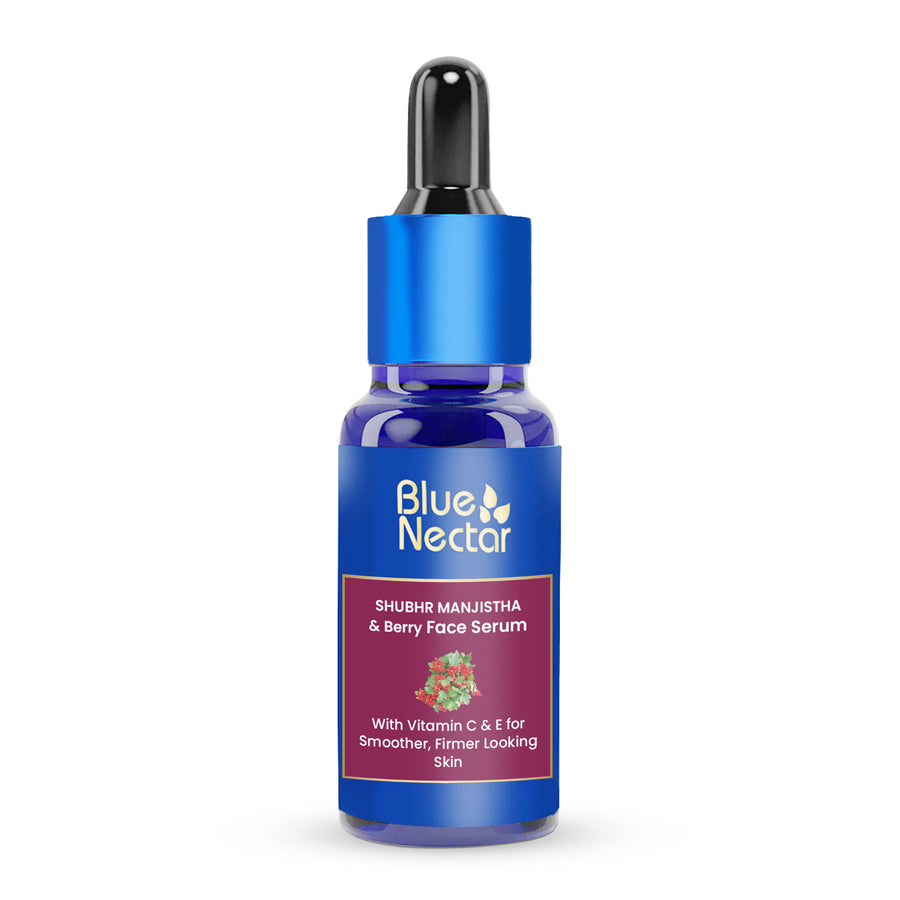

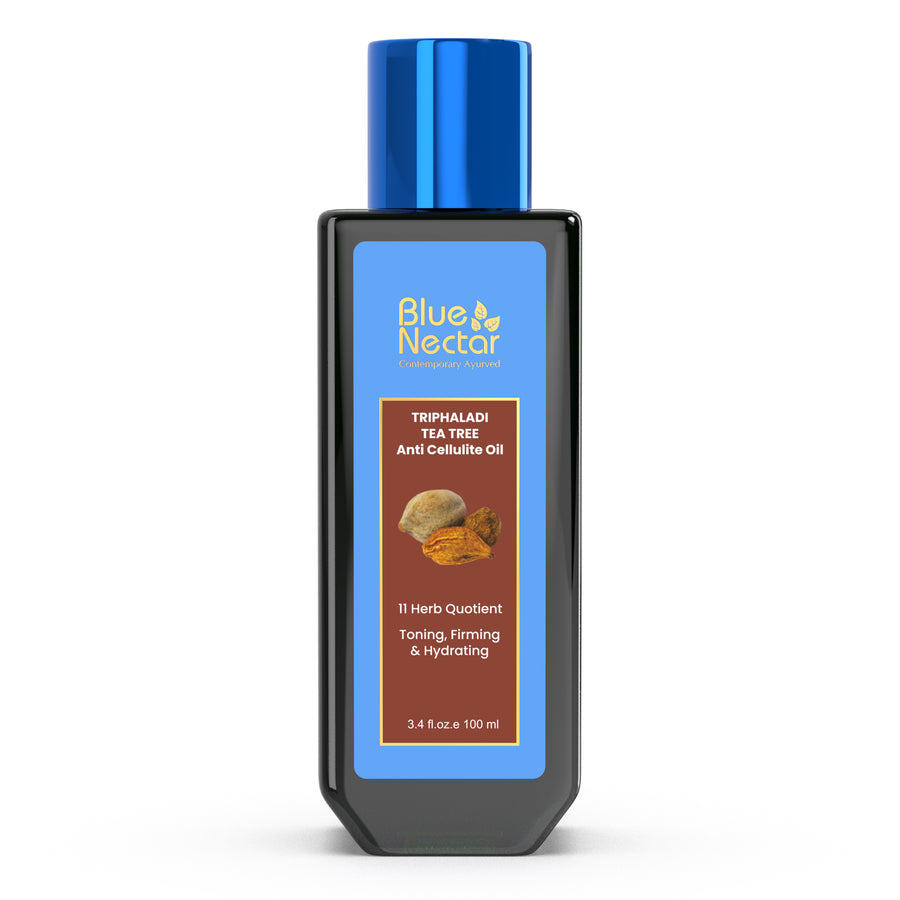
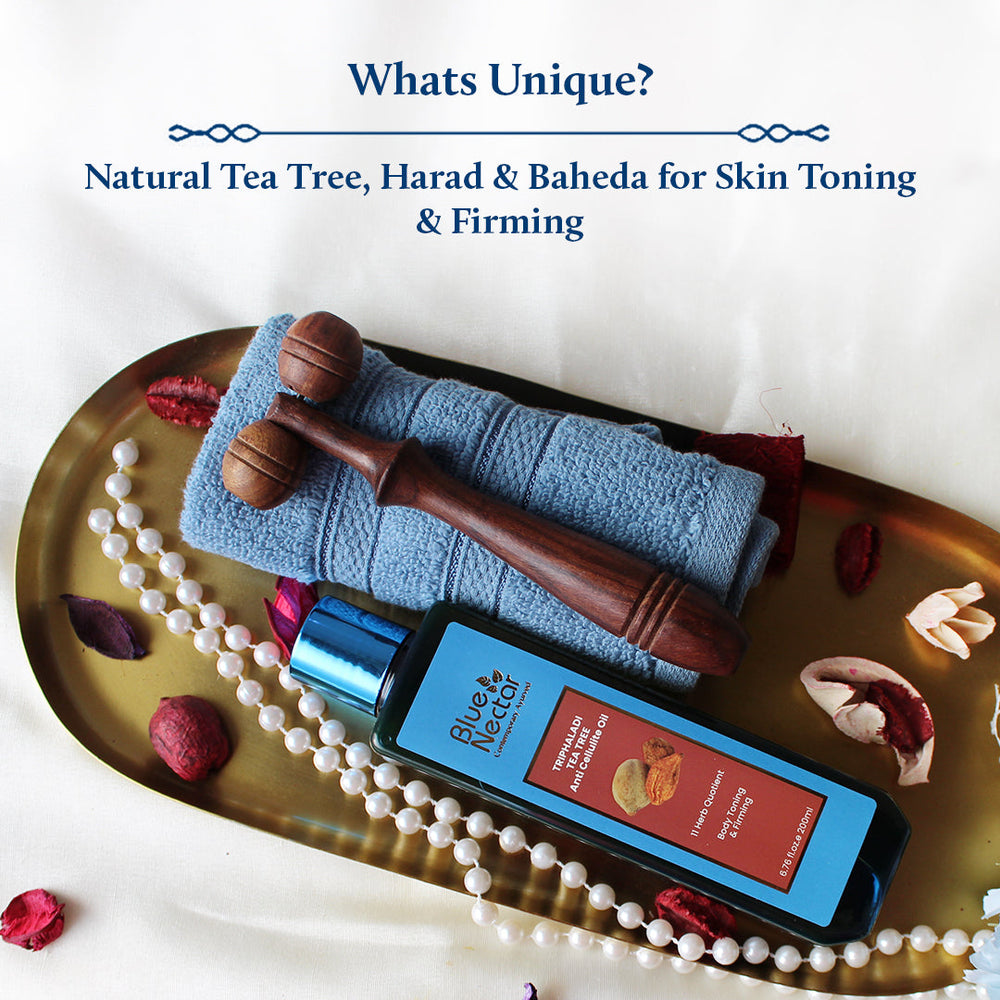
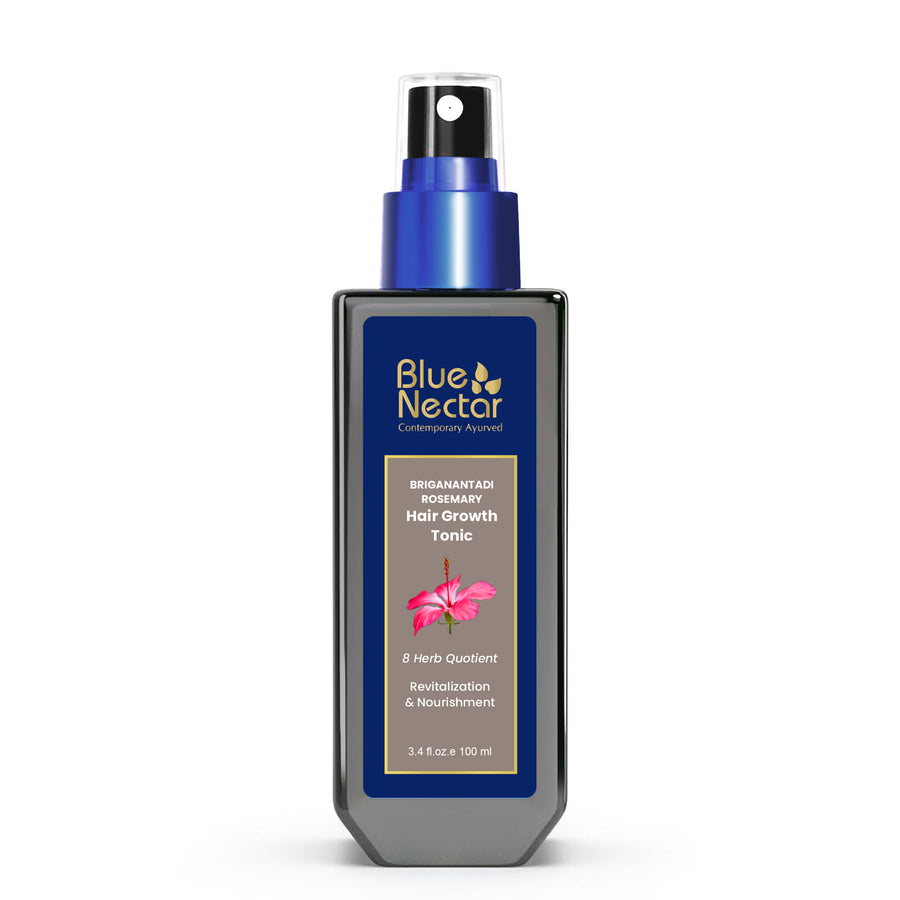
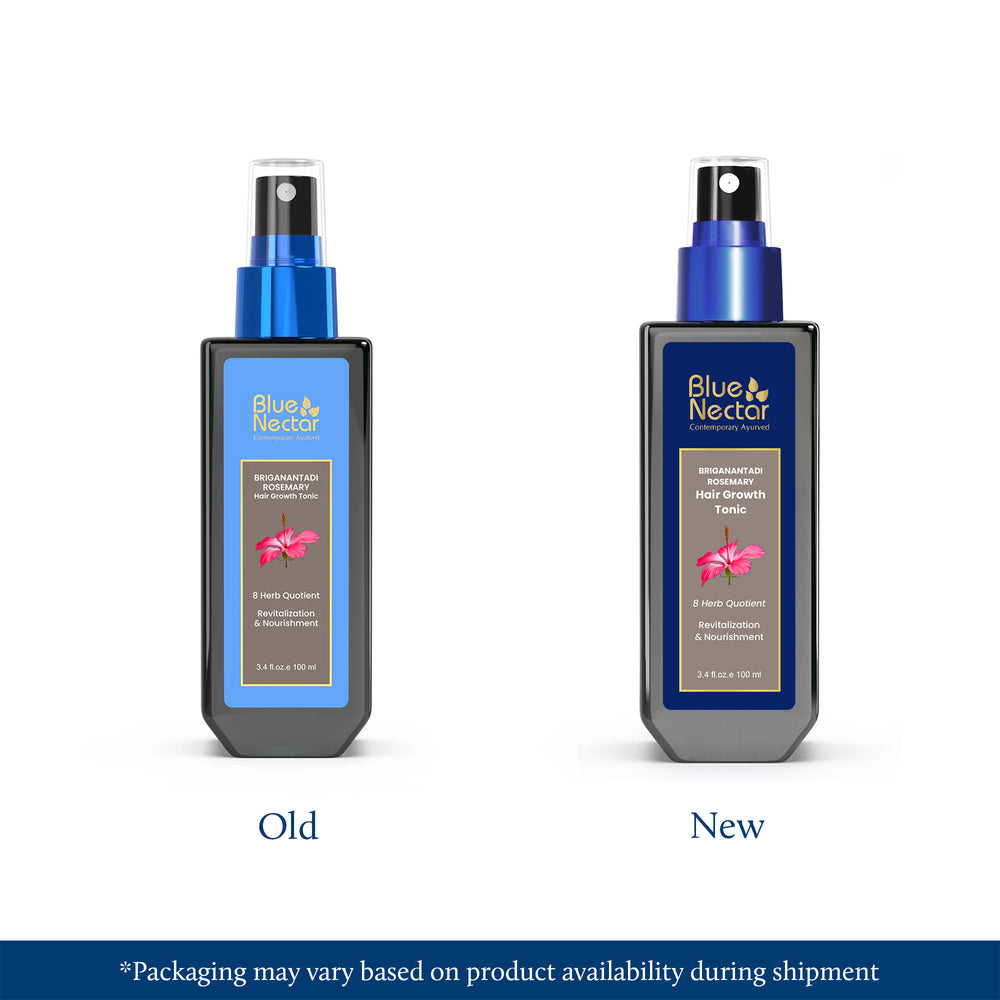
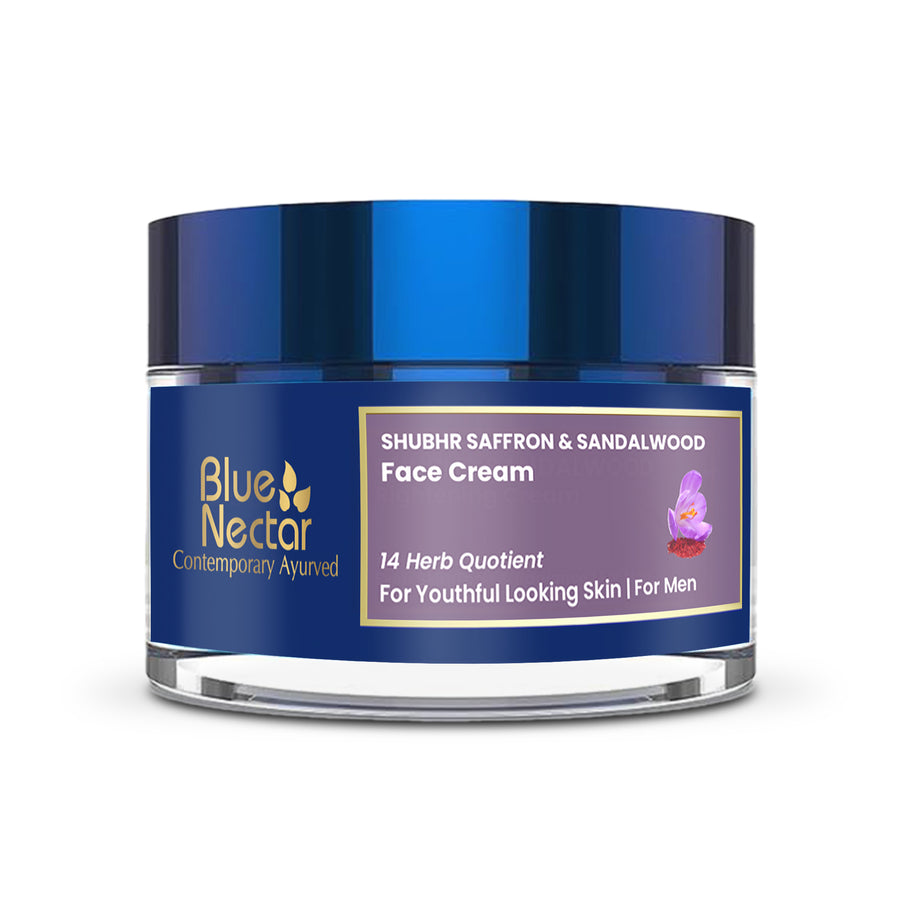
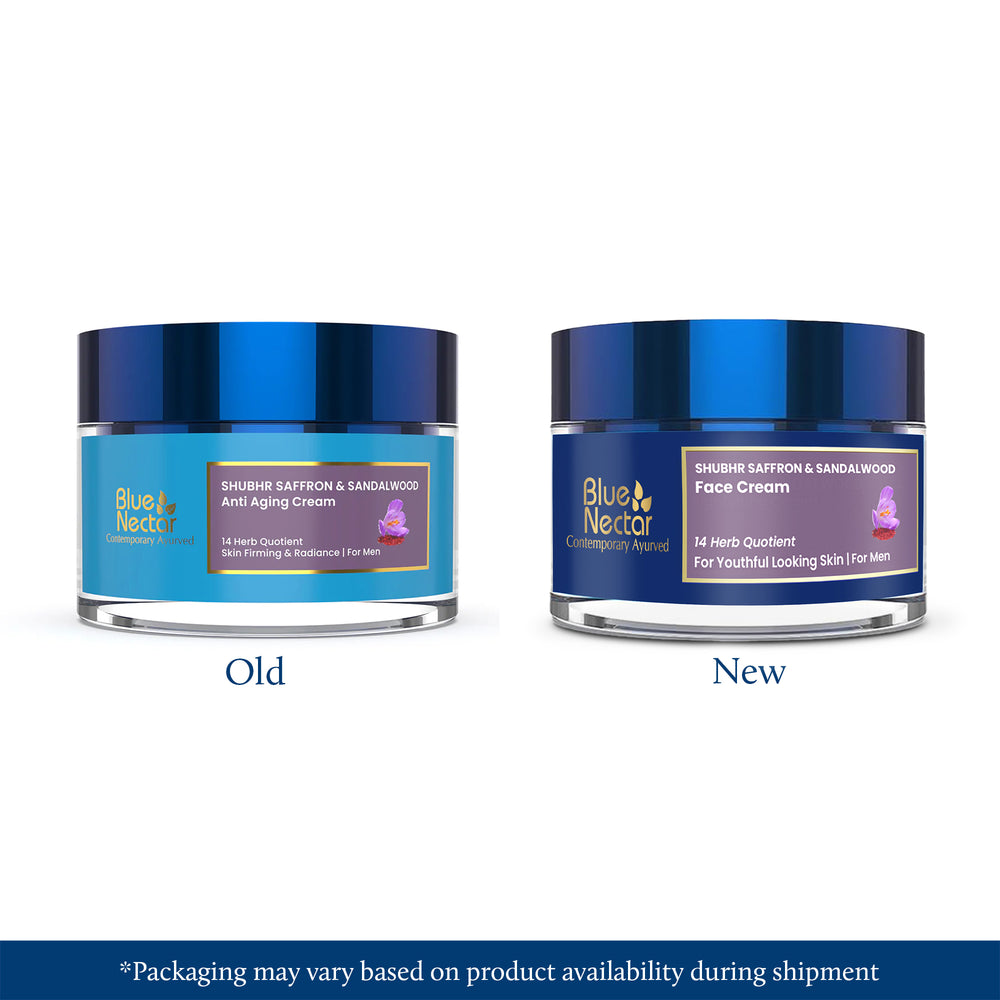


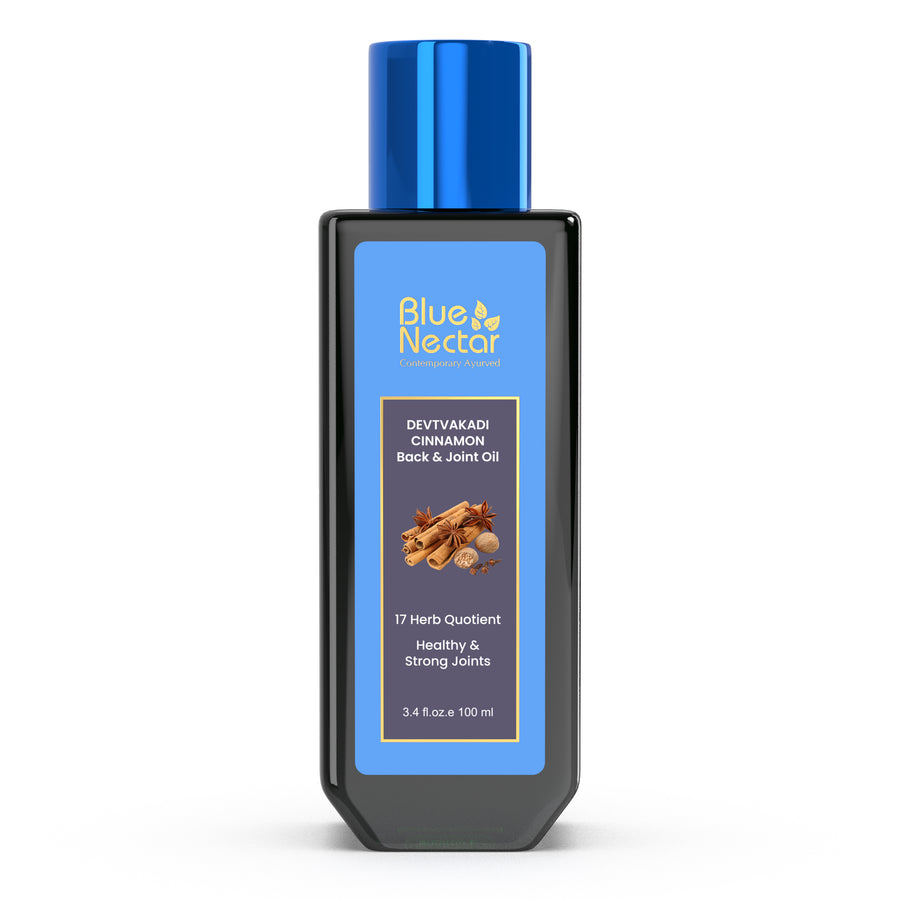
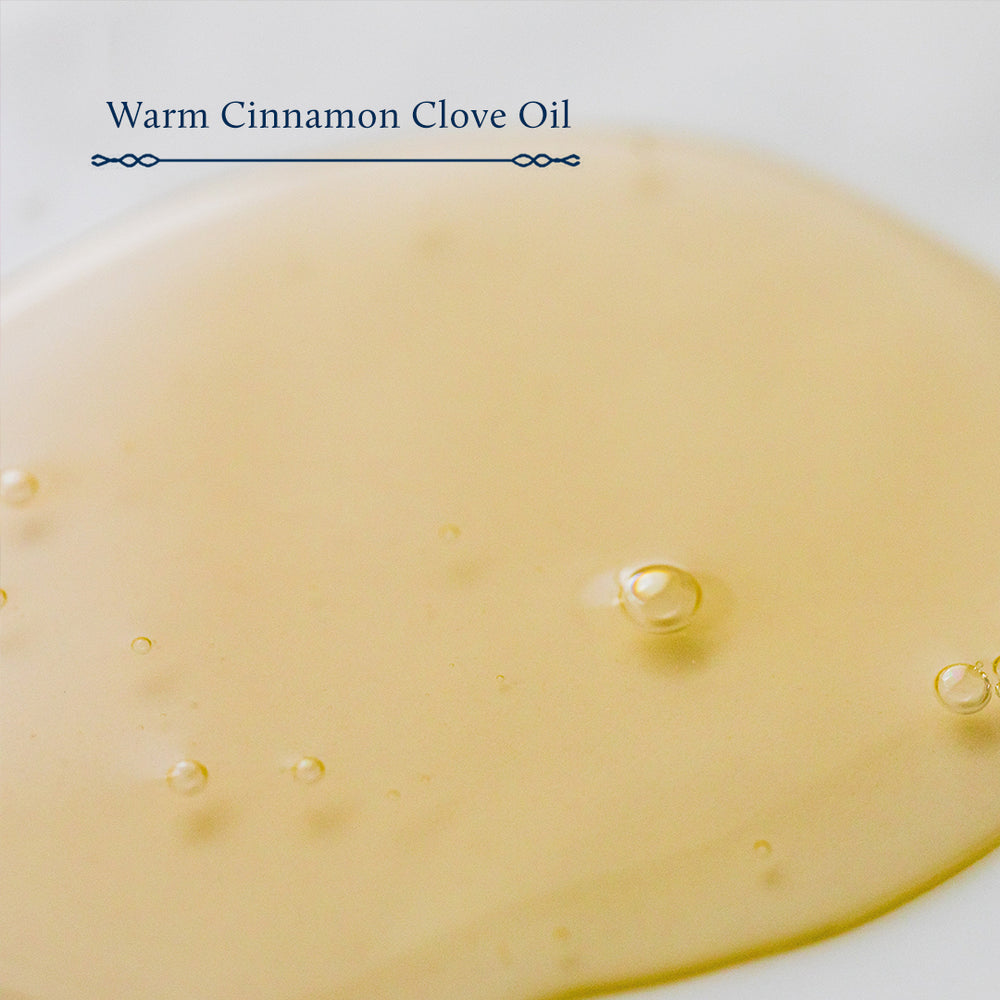



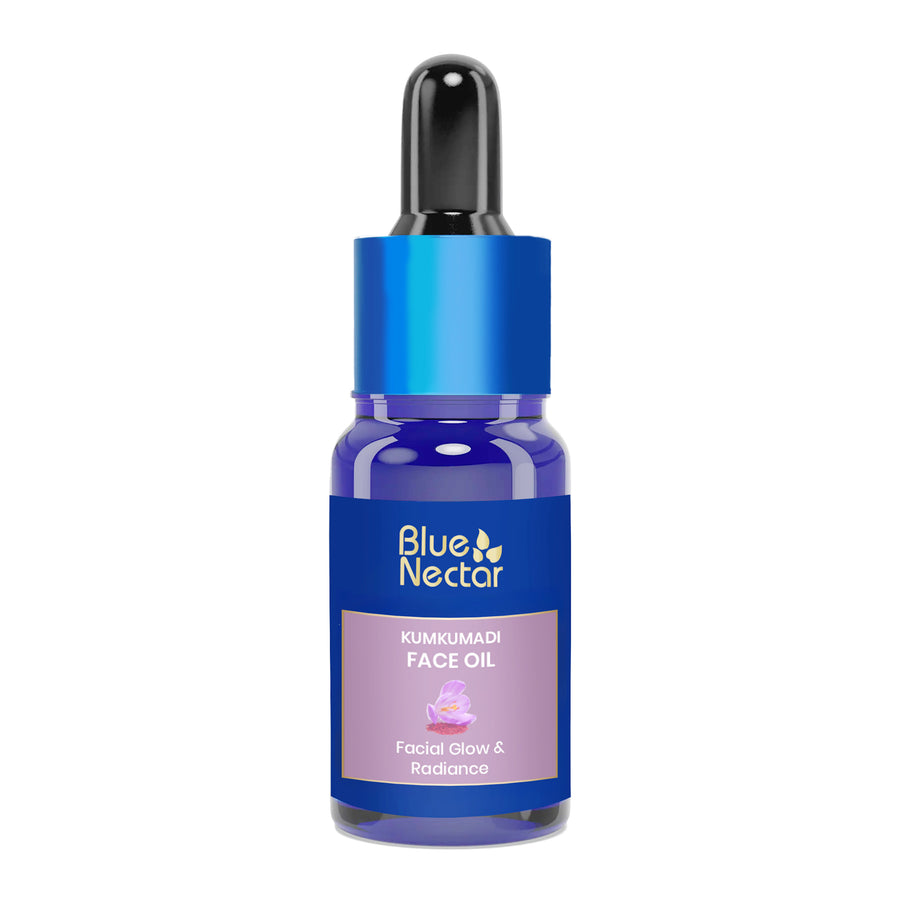
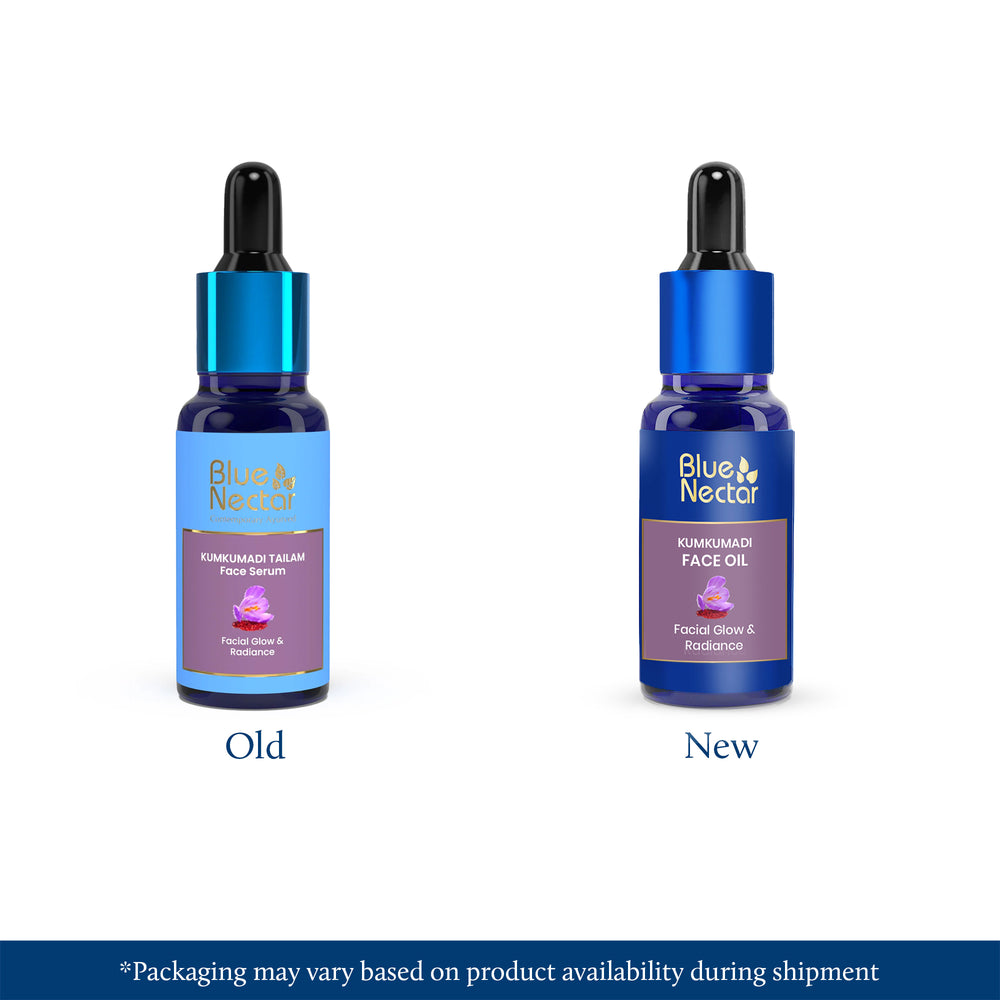
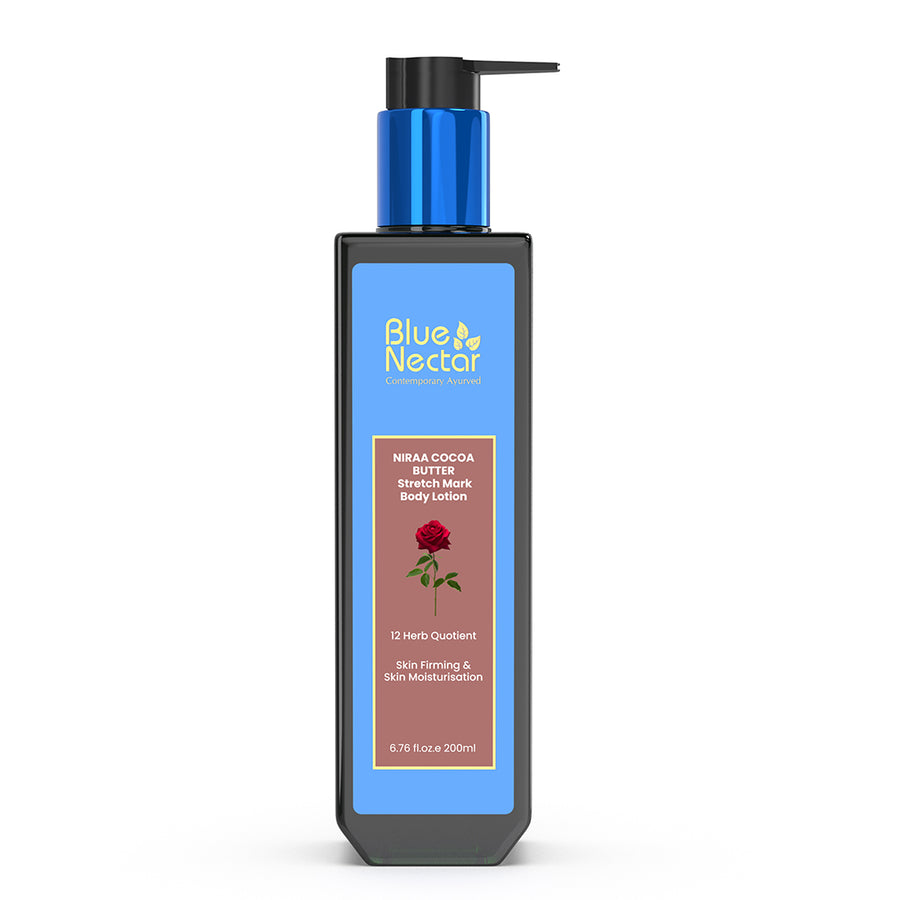
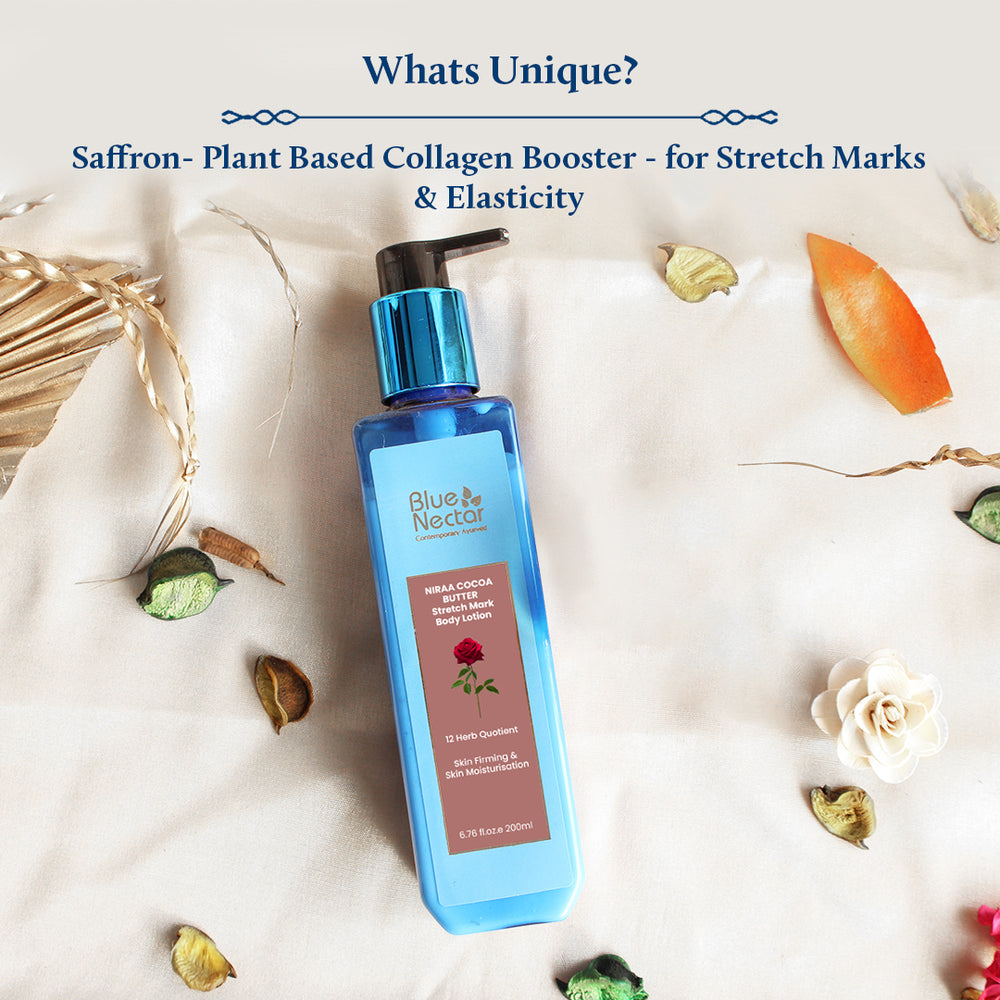
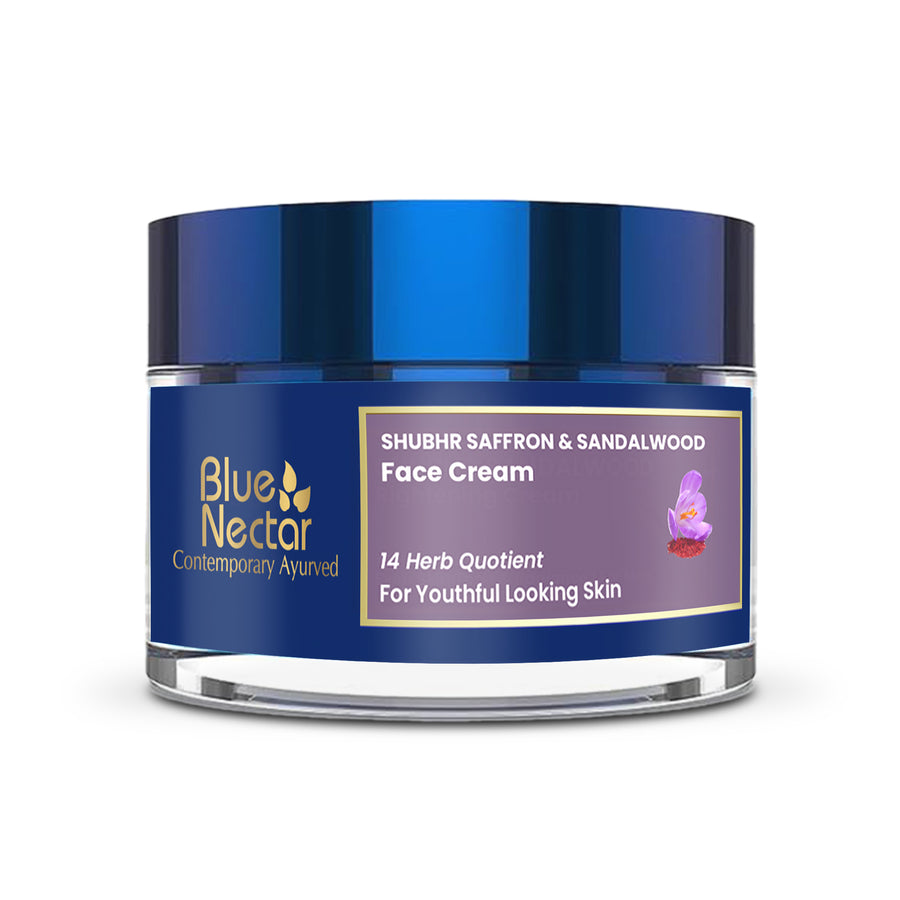
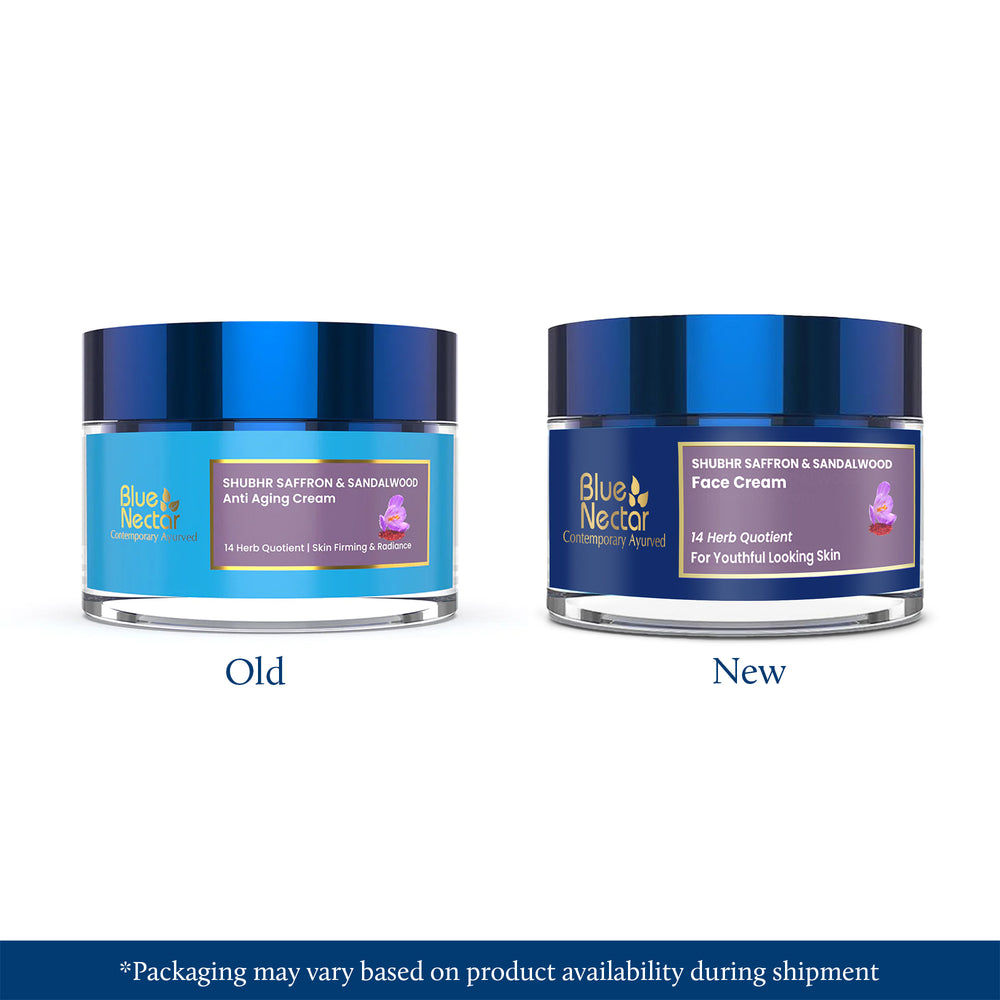
Leave a comment